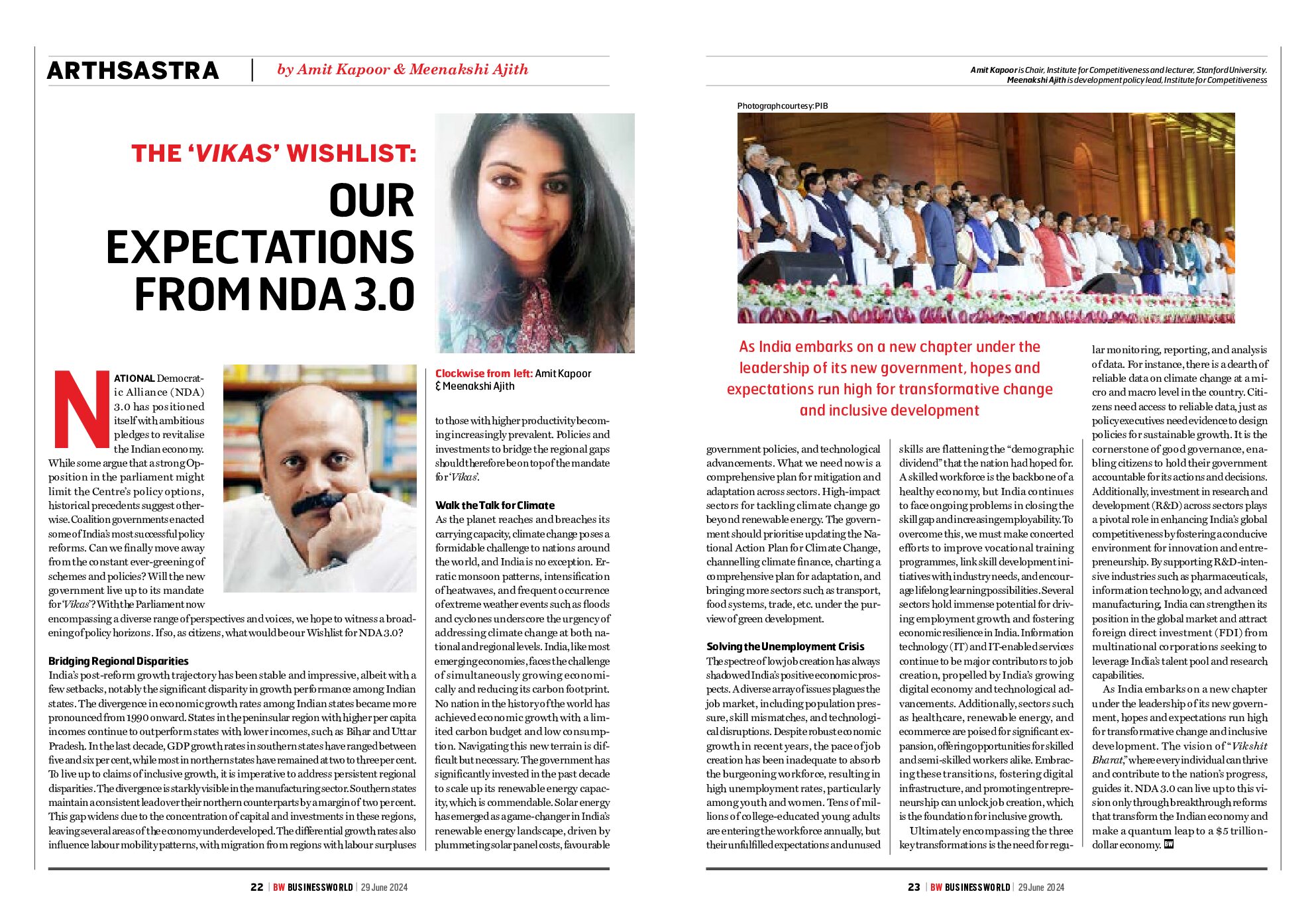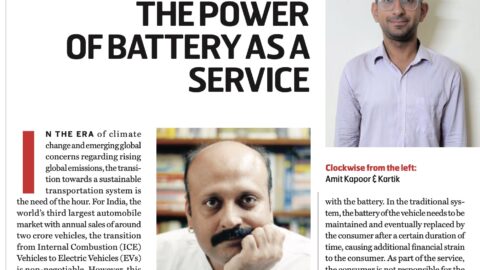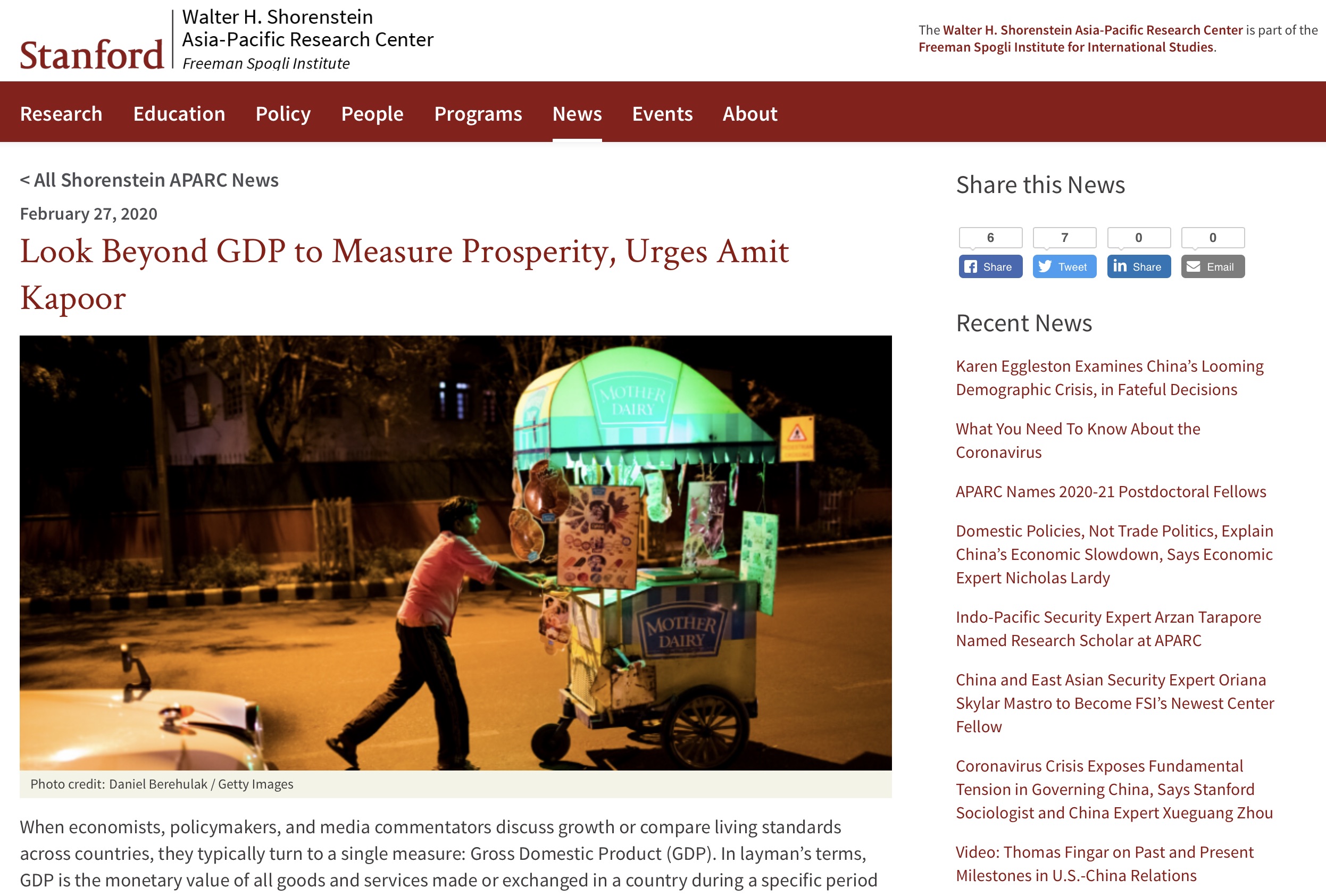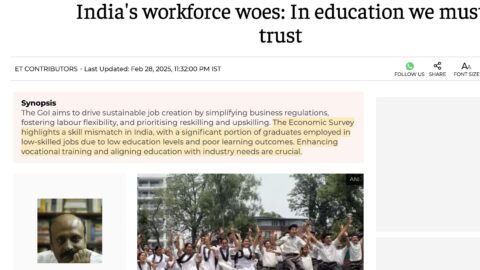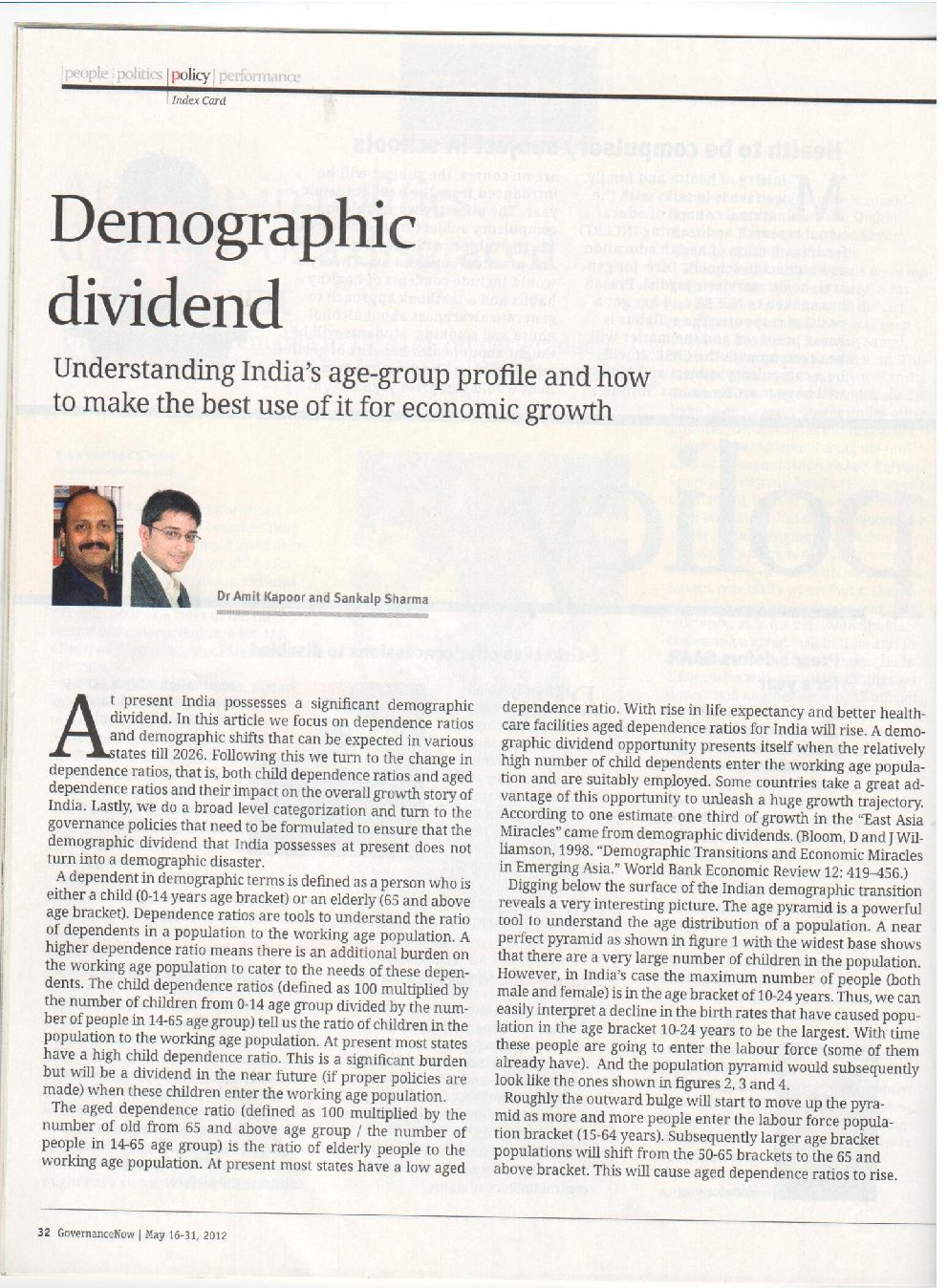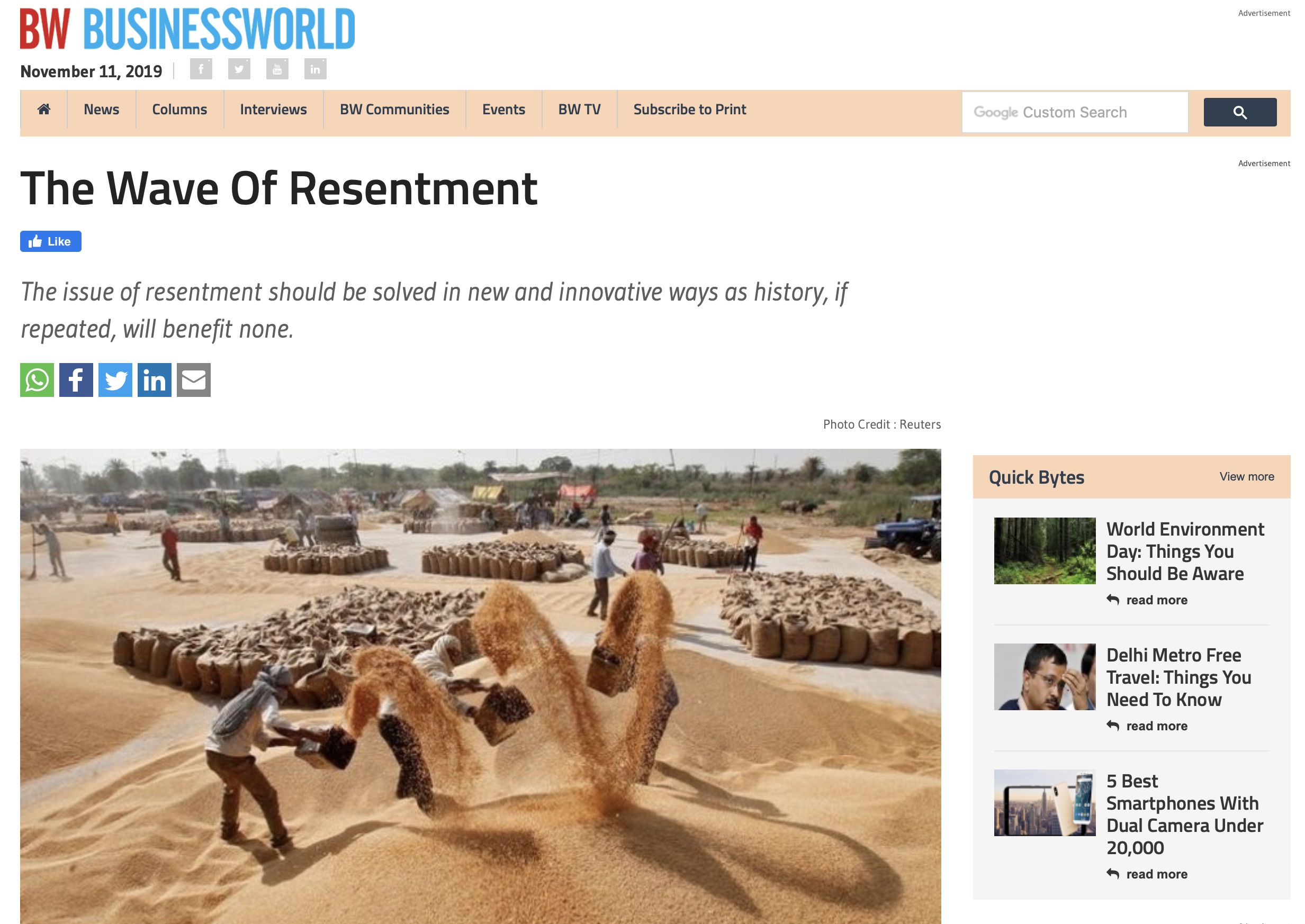by AMIT Kapoor and Meenakshi Ajith
NDA 3.0 has positioned itself with ambitious pledges to revitalise the Indian economy. While some argue that a strong opposition in the parliament might limit the centre’s policy options, historical precedents suggest otherwise. Coalition governments enacted some of India’s most successful policy reforms. Can we finally move away from the constant evergreening of schemes and policies? Will the new government live up to its mandate for ‘Vikas’? With the Parliament now encompassing a diverse range of perspectives and voices, we hope to witness a broadening of policy horizons. If so, as citizens, what would be our Wishlist for NDA 3.0?”
Bridging regional disparities
India’s post-reform growth trajectory has been stable and impressive, albeit with a few setbacks, notably the significant disparity in growth performance among Indian states. The divergence in economic growth rates among Indian states became more pronounced from 1990 onward. States in the peninsular region with higher per capita incomes continue to outperform states with lower incomes, such as Bihar and Uttar Pradesh. In the last decade, GDP growth rates in southern states have ranged between 5-6%, while most in northern states have remained at 2-3%. To live up to claims of inclusive growth, it is imperative to address persistent regional disparities. The divergence is starkly visible in the manufacturing sector. Southern states maintain a consistent lead over their northern counterparts by a margin of 2 percent. This gap widens due to the concentration of capital and investments in these regions, leaving several areas of the economy underdeveloped. The differential growth rates also influence labour mobility patterns, with migration from regions with labour surpluses to those with higher productivity becoming increasingly prevalent. Policies and investments to bridge the regional gaps should therefore be on top of the mandate for ‘Vikas’.
Walk the talk for climate
As the planet reaches and breaches its carrying capacity, climate change poses a formidable challenge to nations around the world, and India is no exception. Erratic monsoon patterns, intensification of heatwaves, and frequent occurrence of extreme weather events such as floods and cyclones underscore the urgency of addressing climate change at both national and regional levels. India, like most emerging economies, faces the challenge of simultaneously growing economically and reducing its carbon footprint. No nation in the history of the world has achieved economic growth with a limited carbon budget and low consumption. Navigating this new terrain is difficult but necessary. The government has significantly invested in the past decade to scale up its renewable energy capacity, which is commendable. Solar energy has emerged as a game-changer in India’s renewable energy landscape, driven by plummeting solar panel costs, favourable government policies, and technological advancements. What we need now is a comprehensive plan for mitigation and adaptation across sectors. High-impact sectors for tackling climate change go beyond renewable energy. The government should prioritize updating the National Action Plan for Climate Change, channelling climate finance, charting a comprehensive plan for adaptation, and bringing more sectors such as transport, food systems, trade, etc. under the purview of green development.
Solving the unemployment crisis
The spectre of low job creation has always shadowed India’s positive economic prospects. A diverse array of issues plagues the job market, including population pressure, skill mismatches, and technological disruptions. Despite robust economic growth in recent years, the pace of job creation has been inadequate to absorb the burgeoning workforce, resulting in high unemployment rates, particularly among youth and women. Tens of millions of college-educated young adults are entering the workforce annually, but their unfulfilled expectations and unused skills are flattening the “demographic dividend” that the nation had hoped for. A skilled workforce is the backbone of a healthy economy, but India continues to face ongoing problems in closing the skill gap and increasing employability. To overcome this, we must make concerted efforts to improve vocational training programs, link skill development initiatives with industry needs, and encourage lifelong learning possibilities. Several sectors hold immense potential for driving employment growth and fostering economic resilience in India. Information technology (IT) and IT-enabled services continue to be major contributors to job creation, propelled by India’s growing digital economy and technological advancements. Additionally, sectors such as healthcare, renewable energy, and e-commerce are poised for significant expansion, offering opportunities for skilled and semi-skilled workers alike. Embracing these transitions, fostering digital infrastructure, and promoting entrepreneurship can unlock job creation, which is the foundation for inclusive growth.
Ultimately encompassing the three key transformations is the need for regular monitoring, reporting, and analysis of data. For instance, there is a dearth of reliable data on climate change at a micro and macro level in the country. Citizens need access to reliable data, just as policy executives need evidence to design policies for sustainable growth. It is the cornerstone of good governance, enabling citizens to hold their government accountable for its actions and decisions. Additionally, investment in research and development across sectors plays a pivotal role in enhancing India’s global competitiveness by fostering a conducive environment for innovation and entrepreneurship. By supporting R&D-intensive industries such as pharmaceuticals, information technology, and advanced manufacturing, India can strengthen its position in the global market and attract foreign direct investment (FDI) from multinational corporations seeking to leverage India’s talent pool and research capabilities.
As India embarks on a new chapter under the leadership of its new government, hopes and expectations run high for transformative change and inclusive development. The vision of “Vikshit Bharat,” where every individual can thrive and contribute to the nation’s progress, guides it. NDA 3.0 can live up to this vision only through breakthrough reforms that transform the Indian economy and make a quantum leap to a $5 trillion-dollar economy.
The article was published with Business World on June 10, 2024.

